 Java
Java javaTutorial
javaTutorial How to solve Java data validation error exception (DataValidationErrorExceotion)
How to solve Java data validation error exception (DataValidationErrorExceotion)
How to solve Java data validation error exception (DataValidationErrorException)
In Java programming, data verification is a very important part. It ensures that the data received by our program is legal and meets our expectations. However, sometimes errors may occur during the data verification process, which requires us to handle the Data Validation Error Exception (DataValidationErrorException). This article will introduce how to solve Java data validation error exceptions and provide code examples to help readers better understand.
- Exception handling method
Java provides try-catch statements to handle exceptions. When handling data verification error exceptions, we can place code that may throw exceptions in the try block, and catch and handle the exception in the catch block. The following code shows a simple exception handling example:
try {
// 数据校验代码
} catch (DataValidationErrorException e) {
// 处理异常的代码
}In the catch block, we can handle exceptions based on specific business needs. For example, we can print exception stack information or return an error message to the user.
- Customized data verification error exception
In addition to the standard exceptions provided by Java, we can also customize data verification error exceptions. By customizing exceptions, we can better communicate exception information to other developers and better differentiate between different data validation errors. The following code shows how to customize a data verification error exception:
public class DataValidationErrorException extends RuntimeException {
public DataValidationErrorException(String message) {
super(message);
}
}In this custom exception class, we inherit the RuntimeException class and override the constructor. In this way, we can pass in the exception information when an exception is thrown and print or display it to the developer.
- Data verification code example
In actual business, the logic of data verification may be quite complex. The following is a simple data verification example to verify whether the age entered by the user meets the regulations:
public static void validateAge(int age) throws DataValidationErrorException {
if (age < 0 || age > 120) {
throw new DataValidationErrorException("年龄必须在0到120之间");
}
}
public static void main(String[] args) {
int age = -10;
try {
validateAge(age);
} catch (DataValidationErrorException e) {
System.out.println(e.getMessage());
}
}In this example, we first define a validateAge method to verify whether the age is legal. If the age is less than 0 or greater than 120, a data verification error exception is thrown, and the exception information is set to "Age must be between 0 and 120". In the main method, we call the validateAge method and use the try-catch statement to catch and handle the exception. If an exception is caught, we print out the exception information.
Through the above examples, we can see how to use exception handling in Java to solve data verification error exceptions. This method can effectively handle exceptions and improve the robustness and fault tolerance of the program. At the same time, we can also use custom exceptions to better distinguish different data verification errors and convey exception information to other developers. I hope this article can help readers better understand and apply the relevant knowledge of exception handling.
The above is the detailed content of How to solve Java data validation error exception (DataValidationErrorExceotion). For more information, please follow other related articles on the PHP Chinese website!
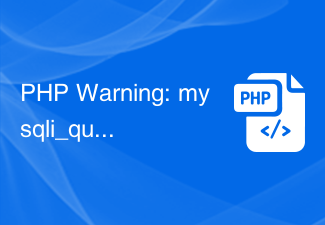 PHP Warning: mysqli_query(): Empty query的解决方法Jun 22, 2023 pm 04:45 PM
PHP Warning: mysqli_query(): Empty query的解决方法Jun 22, 2023 pm 04:45 PM在使用PHP开发Web应用时,经常会遇到各种各样的问题。其中,一些常见的问题是与MySQL数据库相关的问题。有一种问题是“PHPWarning:mysqli_query():Emptyquery”的错误。本文将介绍此错误的原因以及解决方法。首先,让我们看看这个错误表示什么。当您使用mysqli_query函数执行MySQL查询时,如果该查询为空,则会
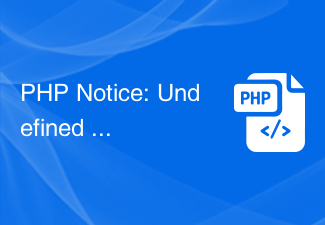 PHP Notice: Undefined property: stdClass::$的解决方法Jun 22, 2023 pm 10:24 PM
PHP Notice: Undefined property: stdClass::$的解决方法Jun 22, 2023 pm 10:24 PM在使用PHP编写代码时,我们经常会看到这样的错误提示:“PHPNotice:Undefinedproperty:stdClass::$”。这个错误提示通常是由于在使用对象的属性时,该属性不存在而引起的。在本文中,我们将讨论如何解决这个问题。首先,我们需要了解这个错误提示的原因。当我们使用对象的属性时,PHP会首先检查该属性是否存在。如果该属性不存在,
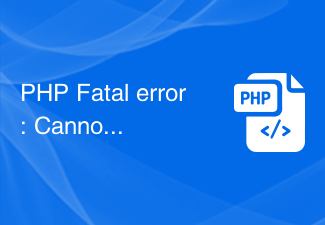 PHP Fatal error: Cannot redeclare的解决方法Jun 22, 2023 pm 07:43 PM
PHP Fatal error: Cannot redeclare的解决方法Jun 22, 2023 pm 07:43 PM在使用PHP进行开发的过程中,有时候会遇到“PHPFatalerror:Cannotredeclare”错误,这个错误通常会出现在如下情况:在PHP代码中多次include/require同一个文件。在代码中定义了和已有的函数/类重名的函数/类。这个错误会导致程序无法继续执行,为了解决这个问题,我们需要了解其产生原因和解决方法。产生原
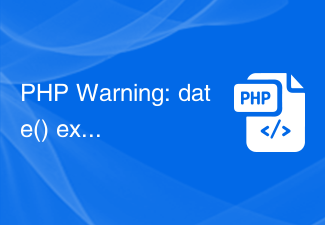 PHP Warning: date() expects parameter 2 to be long, string given的解决方法Jun 22, 2023 pm 08:03 PM
PHP Warning: date() expects parameter 2 to be long, string given的解决方法Jun 22, 2023 pm 08:03 PM在使用PHP程序开发时,经常会碰到一些警告或者错误的提示信息。其中,可能出现的一个错误提示就是:PHPWarning:date()expectsparameter2tobelong,stringgiven。这个错误的提示信息意思是:函数date()的第二个参数期望是长整型(long),但是实际传递给它的是字符串(string)。那么,我们
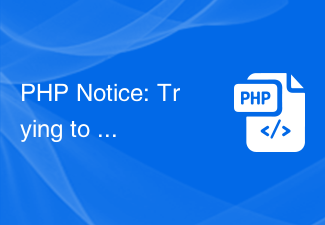 PHP Notice: Trying to get property ‘的解决方法’ of non-object的解决方法Jun 22, 2023 am 11:51 AM
PHP Notice: Trying to get property ‘的解决方法’ of non-object的解决方法Jun 22, 2023 am 11:51 AM当我们在使用PHP进行开发时,有时会遇到”Tryingtogetproperty‘的解决方法’ofnon-object”的错误提示。这个错误的原因一般是因为程序中对一个不存在或者未实例化的对象进行访问,导致了PHP解析器无法识别该对象的属性或方法。那么,如何解决这个错误呢?下面我将为大家介绍几种可能的解决方法。一、检查代码首先,我们需要将出错的代
 TranslucentTB不起作用:如何解决Jun 06, 2023 am 08:21 AM
TranslucentTB不起作用:如何解决Jun 06, 2023 am 08:21 AMTranslucentTB是寻求时尚简约桌面外观的Windows11爱好者广泛使用的工具,遇到了障碍。自从发布以来Windows11内部版本22621.1344(22H2)28年2023月日,TranslucentTB对大多数用户不起作用。此错误使用户努力应对其任务栏的有限自定义选项。用户在寻求克服这一挫折的解决方案时,挫败感显而易见。在最近的Windows11更新之后,TranslucentTB无法正常工作的问题已在多个在线平台上广泛报道,包括论坛和社交媒体。用户一直在分享他们的经验,拼命寻找
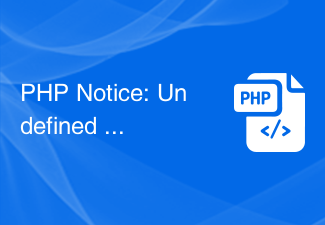 PHP Notice: Undefined index:的解决方法Jun 22, 2023 am 10:15 AM
PHP Notice: Undefined index:的解决方法Jun 22, 2023 am 10:15 AM当使用PHP开发Web应用程序时,经常会遇到“PHPNotice:Undefinedindex:”这样的错误消息。此错误消息通常与数组相关。在PHP中,当我们使用未定义的数组索引时,就会收到这种类型的错误消息。这通常会发生在以下情况下:尝试访问不存在的数组元素尝试使用错误的键来访问数组在本文中,我们将探讨如何解决此错误,并提供一些常见的应用程序开发实践
 PHP Notice: Undefined property: stdClass::$name的解决方法Jun 22, 2023 pm 10:09 PM
PHP Notice: Undefined property: stdClass::$name的解决方法Jun 22, 2023 pm 10:09 PM在使用PHP开发项目时,经常会遇到各种警告和错误信息。其中,PHPNotice:Undefinedproperty:stdClass::$name是比较常见的一种警告提示。这种提示通常出现在尝试访问一个对象属性,但该属性并不存在的情况下。本文将介绍这种警告的解决方法。原因分析在PHP中,stdClass是一个类似于数组的标准类,在没有指定类的情况下创


Hot AI Tools

Undresser.AI Undress
AI-powered app for creating realistic nude photos

AI Clothes Remover
Online AI tool for removing clothes from photos.

Undress AI Tool
Undress images for free

Clothoff.io
AI clothes remover

AI Hentai Generator
Generate AI Hentai for free.

Hot Article

Hot Tools

Safe Exam Browser
Safe Exam Browser is a secure browser environment for taking online exams securely. This software turns any computer into a secure workstation. It controls access to any utility and prevents students from using unauthorized resources.

SAP NetWeaver Server Adapter for Eclipse
Integrate Eclipse with SAP NetWeaver application server.

SublimeText3 Chinese version
Chinese version, very easy to use

DVWA
Damn Vulnerable Web App (DVWA) is a PHP/MySQL web application that is very vulnerable. Its main goals are to be an aid for security professionals to test their skills and tools in a legal environment, to help web developers better understand the process of securing web applications, and to help teachers/students teach/learn in a classroom environment Web application security. The goal of DVWA is to practice some of the most common web vulnerabilities through a simple and straightforward interface, with varying degrees of difficulty. Please note that this software

Dreamweaver Mac version
Visual web development tools




